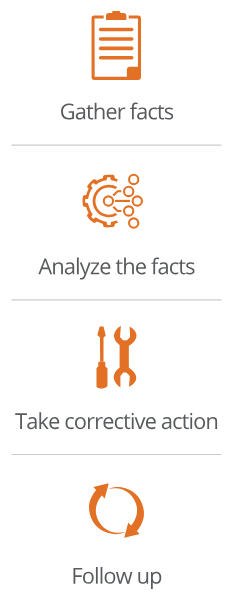
Injuries, illnesses and near-misses do not "just happen." These incidents have definite causes, traceable to a specific sequence of events. But you and your employees may not fully understand those causes, so you may fail to take action to prevent an incident from happening again. Employers who investigate work-related injuries, illnesses and near-misses can understand their causes and keep them from happening again. You can solve this problem by having your supervisors conduct an incident analysis (PDF).
For support or for help mitigating risks after an accident, contact our safety services support team at safety@texasmutual.com or call 844-WORKSAFE (967-5723).

